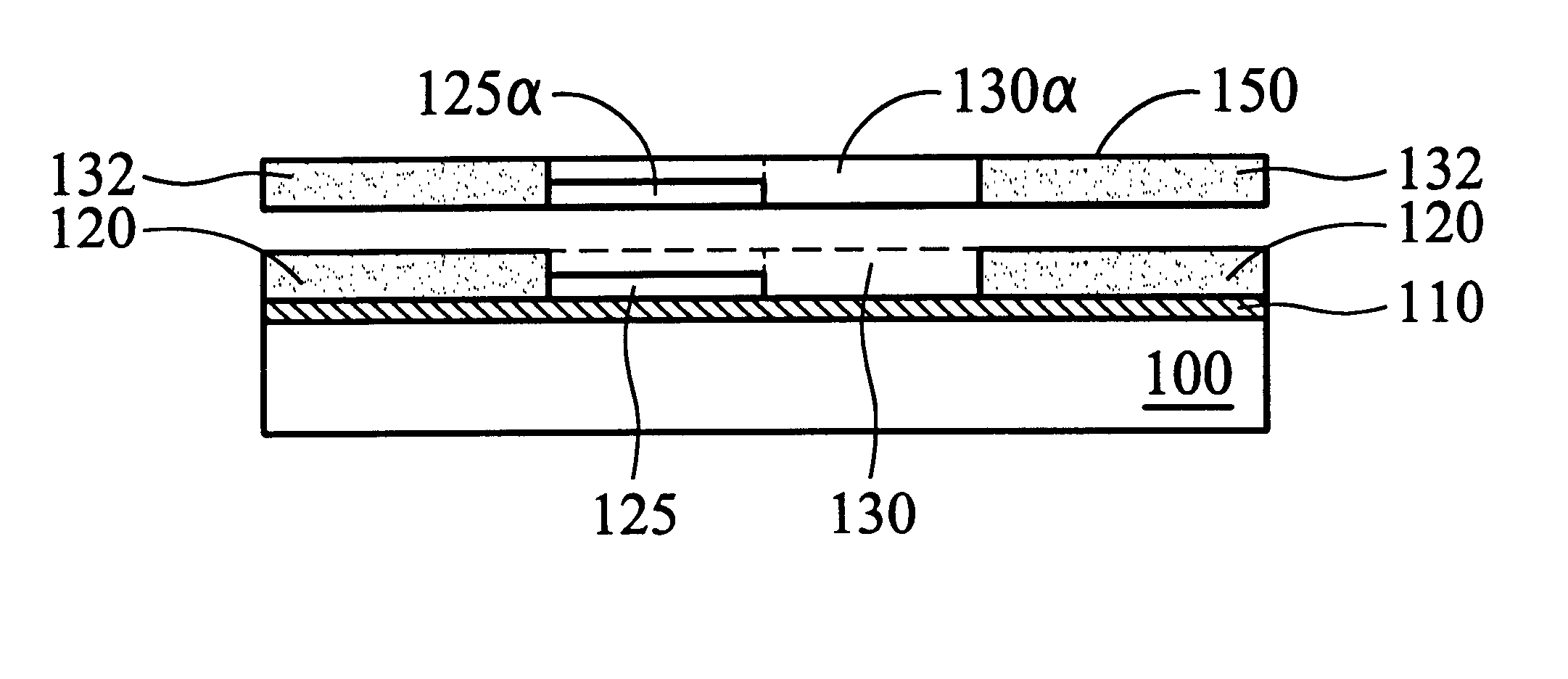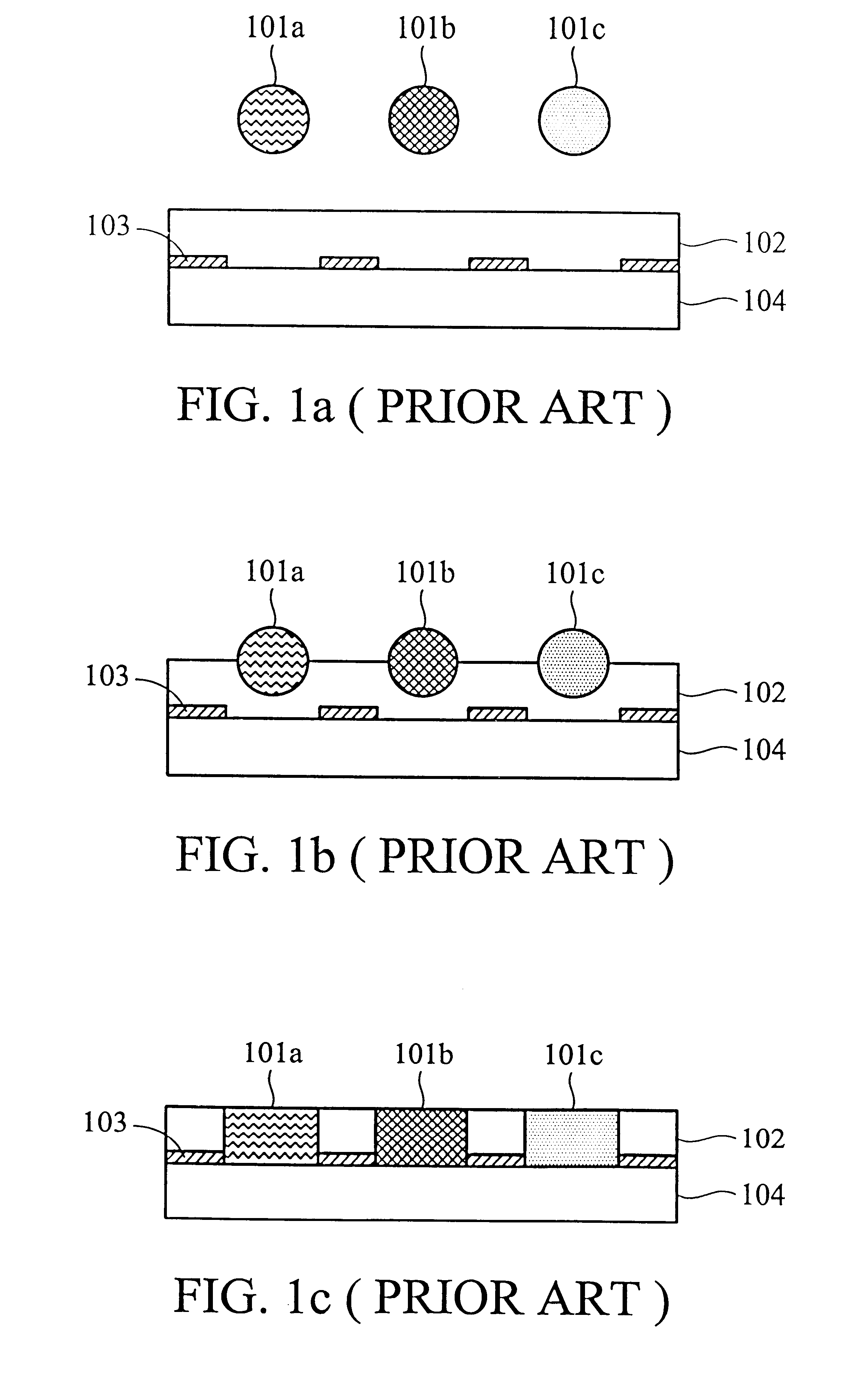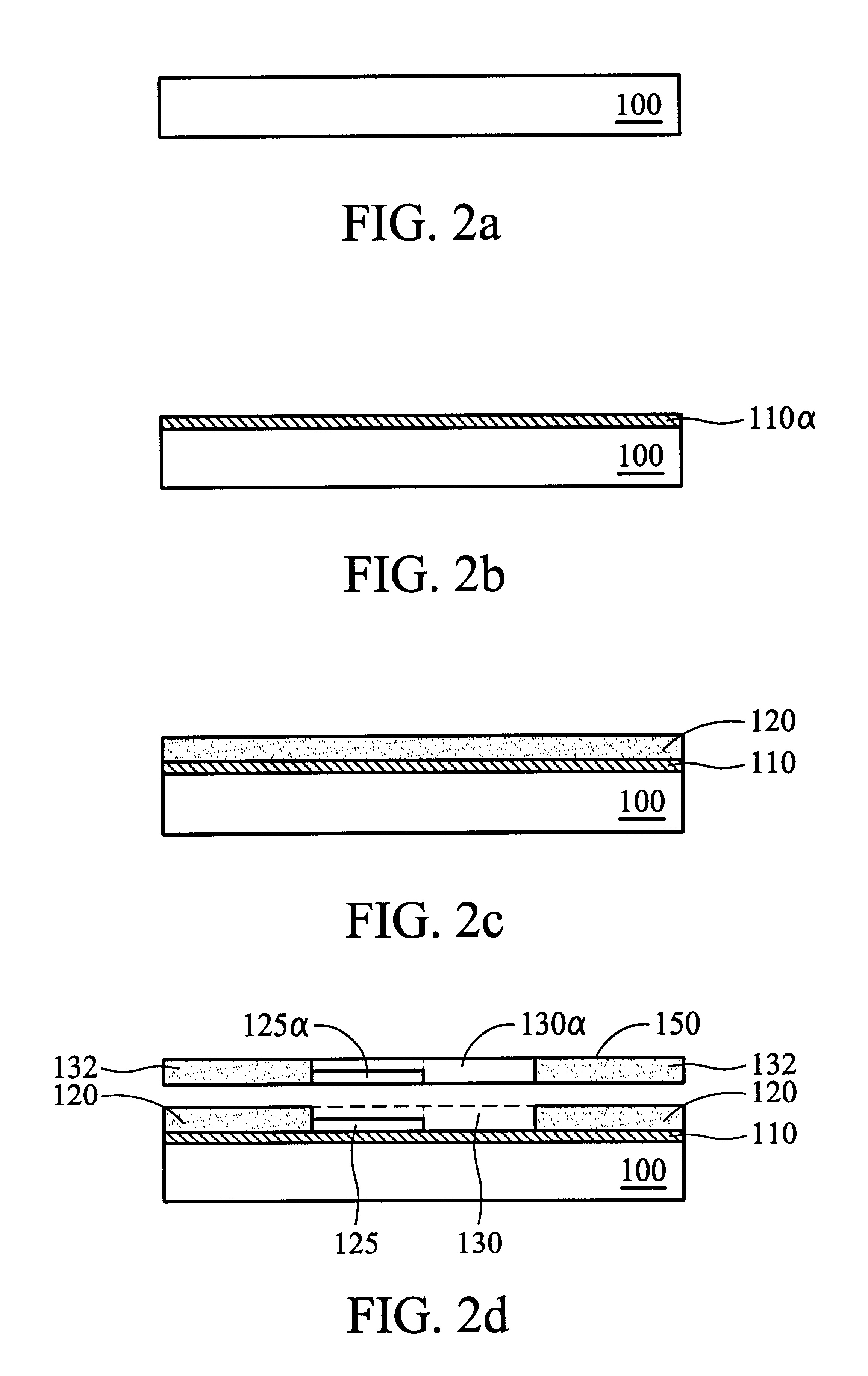Color filters for liquid crystal display panels and method of producing the same
a technology of liquid crystal display and color filter, which is applied in the field of color filter for liquid crystal display (lcd) panels, can solve the problems of increasing production costs, difficulty in controlling the position of colors and uniform thickness of various colors, and limited color pattern patterns, so as to reduce the partitions needed for lithography and stop further oxidation
- Summary
- Abstract
- Description
- Claims
- Application Information
AI Technical Summary
Benefits of technology
Problems solved by technology
Method used
Image
Examples
embodiment
1.sup.st Embodiment
FIGS. 2a-2f illustrate the process according to the 1.sup.st Embodiment of the invention to produce a color filter without black matrix. First, in FIG. 2a, a transparent substrate 100 is provided, followed by forming a Cr layer 110.alpha. by physical vapor deposition (PVD) on the substrate 100, as shown in FIG. 2b. Next, the Cr layer is completely oxidized to form a first color layer 110 (blue).
The formation of metal layer by PVD can be replaced with chemical vapor deposition (CVD) as well. The thickness of the Cr layer is at least a layer of Cr atom or Cr-containing alloy, within the range of 60-5000 .ANG.. The transparent substrate is glass or polymer. As for the Cr layer, other metals such as Cu, Al, Fe and Ni are applicable as well. The oxidation step is performed by a strong acid, such as chromic acid, sulfuric acid, nitric acid or combinations thereof. A combination of chromic acid and sulfuric acid is used in this embodiment.
Then, in FIG. 2c, a positive pho...
PUM
| Property | Measurement | Unit |
|---|---|---|
| thickness | aaaaa | aaaaa |
| transparent | aaaaa | aaaaa |
| area | aaaaa | aaaaa |
Abstract
Description
Claims
Application Information
 Login to View More
Login to View More - R&D
- Intellectual Property
- Life Sciences
- Materials
- Tech Scout
- Unparalleled Data Quality
- Higher Quality Content
- 60% Fewer Hallucinations
Browse by: Latest US Patents, China's latest patents, Technical Efficacy Thesaurus, Application Domain, Technology Topic, Popular Technical Reports.
© 2025 PatSnap. All rights reserved.Legal|Privacy policy|Modern Slavery Act Transparency Statement|Sitemap|About US| Contact US: help@patsnap.com



